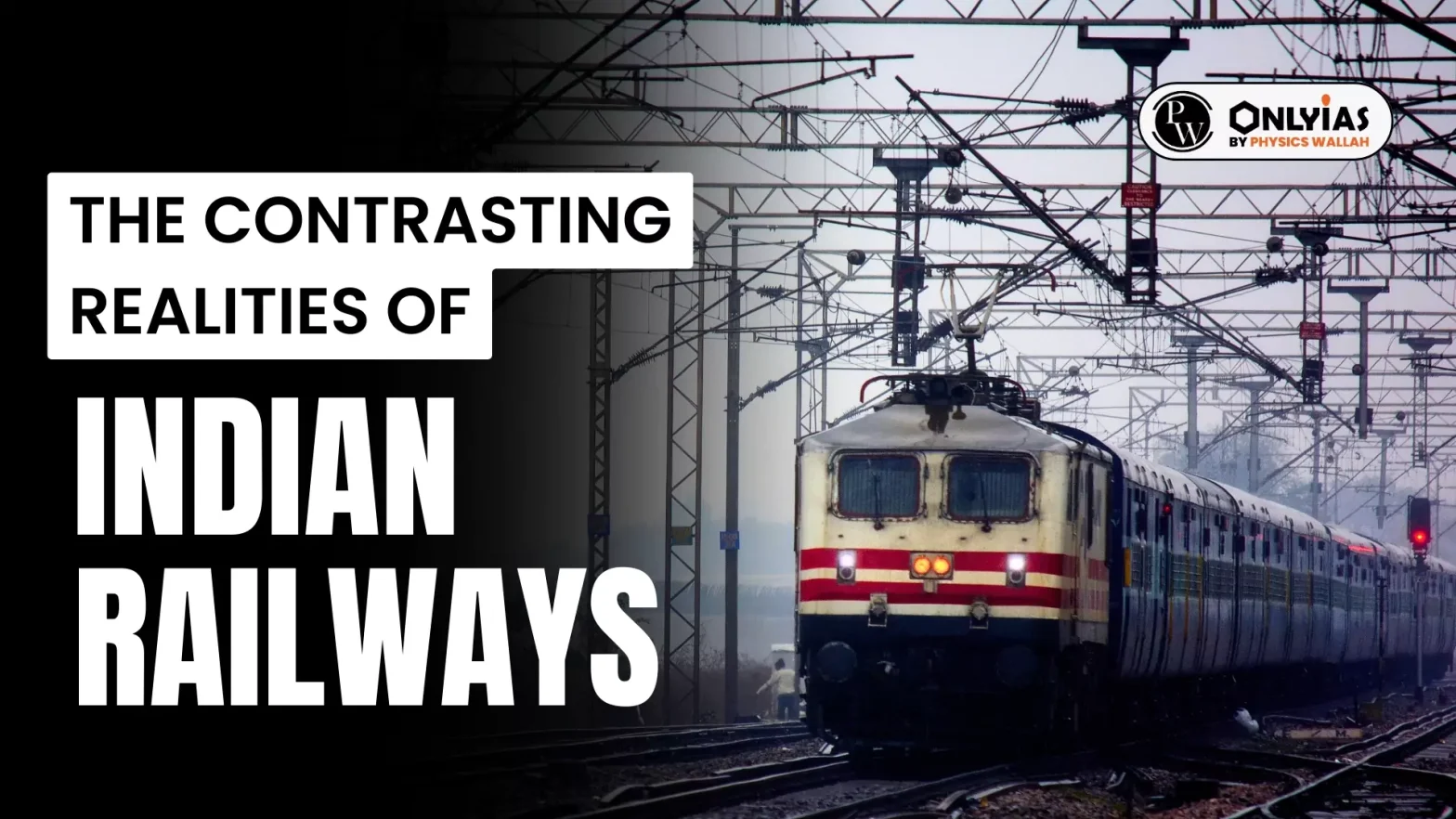Context
The Indian government recognized the need for railways modernization and embarked on an ambitious mission to transform from existing trains into world-class transportation.
| Relevance For Mains: History of Indian Railways, Issues with Indian railways. |
History of Indian Railways
- Colonial Beginnings: Established in 1853 by the British for colonial interests. Once had a more developed network than China.
- Decline and Stagnation: Now struggling to compete with China’s infrastructure.
Main Issues Facing Indian Railways
- Capacity: Overcrowding, especially in non-AC coaches.
- Speed: Poor track network limiting train speeds.
- Safety and Delays: Accidents, vacant safety-related related posts, and frequent delays.
- Track Capacity: 40% of tracks operating beyond capacity.
- Accidents: Majority of accidents caused by derailment due to poor track system.
- Safety Personnel: Vacant safety-related posts and limited anti-collision systems.
- Delays: Delays causing significant loss of time for passengers.
- Railway Finance: Operating at a loss, cross- subsidization, and project delays.
- Operating Ratio: 107 (spending Rs 107 to earn Rs 100).
- Cross-subsidization: Between freight and passenger services.
- Capital Investment: Dependence on budget and loans for infrastructure.
- Project Delays: Increasing costs.
- Revenue Loss: Due to ticketless travel.
Enroll now for UPSC Online Course
Way Forward
- Infrastructure Investment: Investment in infrastructure
- Manufacturing Model: Adoption of China’s manufacturing model
- Mission Raftaar: Mission Raftaar to increase train speeds
- High-Speed Tracks: Development of high-speed compatible tracks
Conclusion
With concerted efforts and strategic planning, Indian Railways can usher in a new era of efficiency, safety, and modernization, fulfilling its critical role in India’s economic development and societal connectivity.
Also Read: Indian Railways Initiates “Hydrogen For Heritage” Project
![]() 12 May 2024
12 May 2024

